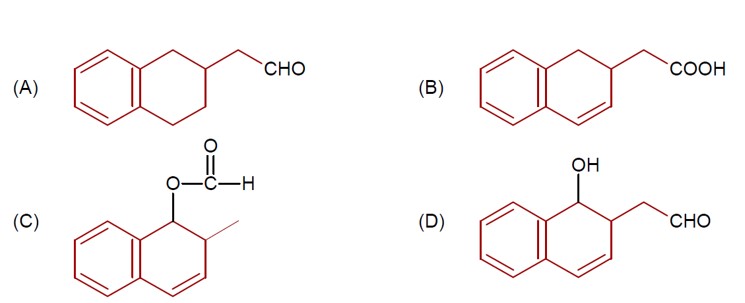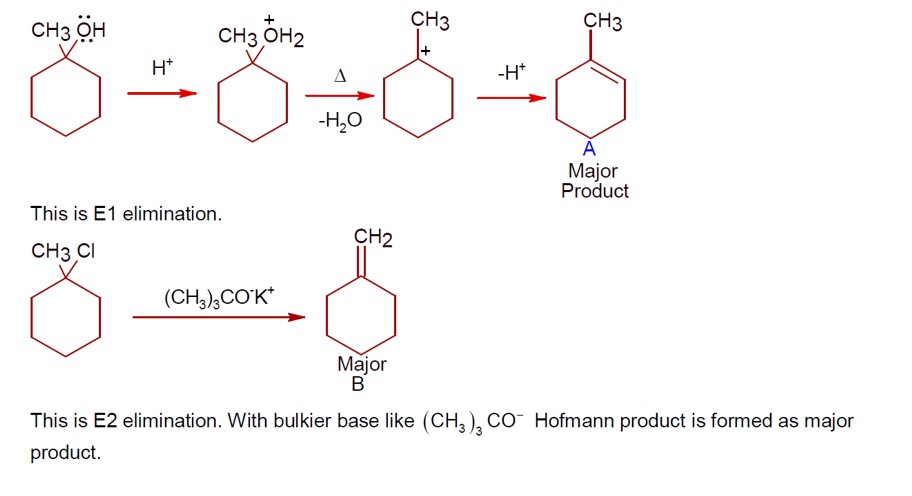Class 12th
Get insights from 12k questions on Class 12th, answered by students, alumni, and experts. You may also ask and answer any question you like about Class 12th
Follow Ask QuestionQuestions
Discussions
Active Users
Followers
New answer posted
2 months agoContributor-Level 9
The enol form of acetone exists in less than 0.1% quantity, since its keto form is highly stable. But in the case of acetylacetone, the enol form is stabilized by intramolecular H-bonding, so its quantity increases to approximately 15%.
The intramolecular H-bond in the enol form of acetylacetone is shown.
New answer posted
2 months agoContributor-Level 9
DIBAL-H at low temperature in a non-polar solvent, followed by hydrolysis, reduces esters to an aldehyde and an alcohol as a byproduct. The reaction shown is:
New answer posted
2 months agoContributor-Level 10
Yes, total internal reflection can occur in both sound and water waves, including light waves, since it follows the same principle. Whenever a light/sound/water wave travels from denser to rarer medium and strikes the boundary of the medium at an angle greater than critical angle, the wave entirely reflects back into denser medium rather than refracting. Sonar waves in submarine reflect back entirely from the water surface as it hits at a steep angle. In water, ocean waves approach beach and slow down because of shallower water. If a wave hits the boundary of deep and shallow water at a steep angle, these waves will reflect back toward
New answer posted
2 months agoContributor-Level 10
Let us take a look at the various applications of Total Internal Reflection in real life:
Total internal reflection is the foundational phenomenon used in modern telecommunications, internet cables and medical imaging. Light travels through thin and flexible fibres, which are made of glass and plastic. This light, then, undergoes Total internal reflection in the inner walls of the fibre, which allows travelling long distances with minimum loss.
Mirage is a phenomenon that occurs due to the total internal reflection as light gets reflected between the layers of air.
Diamonds shine because of total internal reflection. The gem is cut
New answer posted
2 months agoContributor-Level 10
Mirage is formed due to total internal reflection in the following way:
On a hot day, the air near the ground becomes extremely hot as compared to air above it since hot air is less dense than cooler air, which has a lower refractive index.
Light from the sky travels toward hotter and less dense air near the ground. As this light enters the hotter layer, it will bend away from the normal because of the change in refractive index.
In case the angle of light is steep enough, it will exceed the critical angle between two layers of air. The light, instead of bending, reflects back up as a result of total internal reflection.
This reflected lig
New answer posted
2 months agoContributor-Level 10
First, the specific conductance (κ) is calculated (κ = conductance * cell constant), and units are converted. Then, the molar conductivity (Λ? ) is found using the formula Λ? = κ / Concentration, with all units in the SI system. The calculation yields 14.3 mS m² mol? ¹.
Answer: 14 (Rounded off)
New answer posted
2 months agoContributor-Level 10
The energy is calculated using the formula Δ? = hc/λ. Plugging in the values for Planck's constant (h), the speed of light (c), and the given wavelength gives an energy of 3.99 * 10? ¹? J. The answer is requested as a single digit.
Answer: 4 (in units of 10? ¹? J)
New answer posted
2 months agoContributor-Level 10
Using Raoult's Law, P_Total = P°_A·X_A + P°_B·X_B = (21 kPa * 1/3) + (18 kPa * 2/3) = 7 + 12 = 19 kPa.
Answer: 19 kPa
New answer posted
2 months agoContributor-Level 10
This is a limiting reactant problem. The initial moles are 5.25 mmol of Pb (NO? )? and 2.4 mmol of Cr? (SO? )? Based on the 3:1 stoichiometric ratio, Pb (NO? )? is the limiting reactant. The moles of PbSO? formed are equal to the initial moles of the limiting reactant, which is 5.25 mmol or 5.25 * 10? ³ moles. The question asks for the answer in units of 10? moles.
Taking an Exam? Selecting a College?
Get authentic answers from experts, students and alumni that you won't find anywhere else
Sign Up on ShikshaOn Shiksha, get access to
- 65k Colleges
- 1.2k Exams
- 679k Reviews
- 1800k Answers







